Glacier
Latest
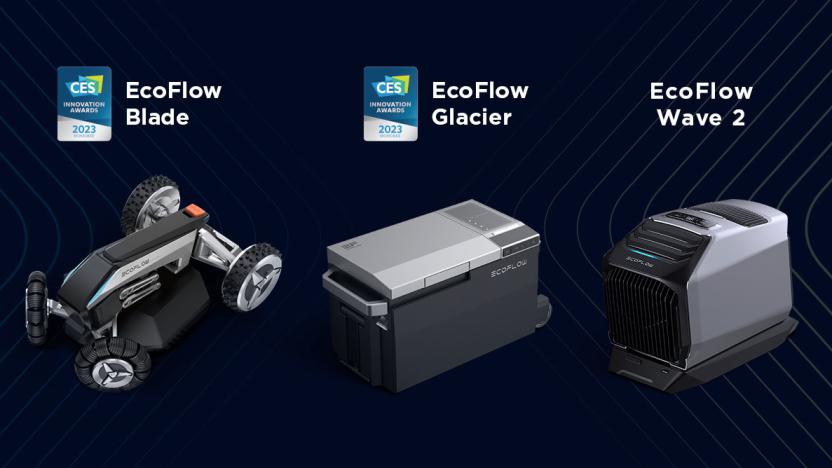
Ecoflow boosts its off-grid smart home with a robotic mower
Who says living off-grid is hard?

Decades of spy satellite images help track melting Himalayan glaciers
You don't need cutting-edge satellite data to make sense of Earth's changing climate. Researchers have published a study of melting Himalayan glaciers that takes advantage of 40 years' worth of satellite imagery posted by the US Geological Survey, including declassified KH-9 Hexagon spy satellite photos from the 1970s and 1980s. The info not only let researchers cover a vast territory (about 650 glaciers over 1,240 miles), but made it possible to automatically create 3D models that reflected declining glacier elevations.
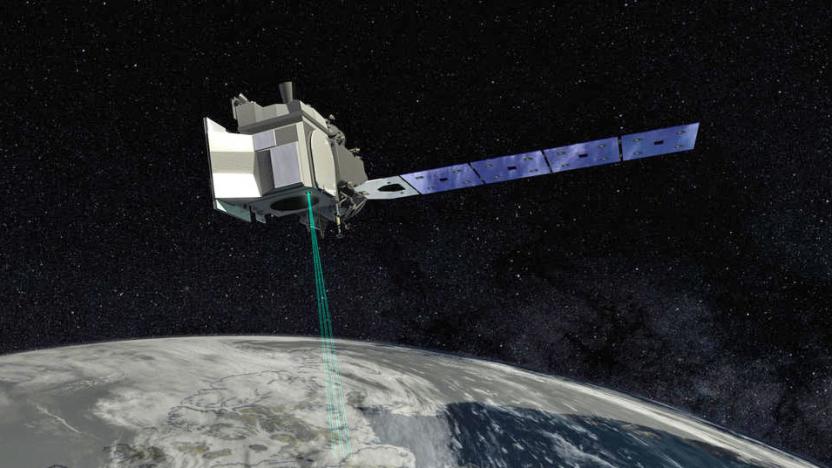
NASA will launch its ice-tracking satellite ICESat-2 on Saturday
On Saturday, NASA will attempt to launch its Ice, Cloud and land Elevation Satellite-2, or ICESat-2, a satellite that will help researchers measure the height of natural features on Earth. With the help of a powerful on-board laser, ICESat-2 will measure changes in Earth's ice across seasons and years. "Retreating glaciers. Shrinking sea ice. Melting ice sheets. The frozen reaches of Earth are changing at dramatic rates," NASA said, "and the impacts, from sea level rise to altered weather patterns, span the planet." So ICESat-2's mission is to collect incredibly precise measurements of Earth's ice as well as the heights of other features like forests, oceans and clouds.
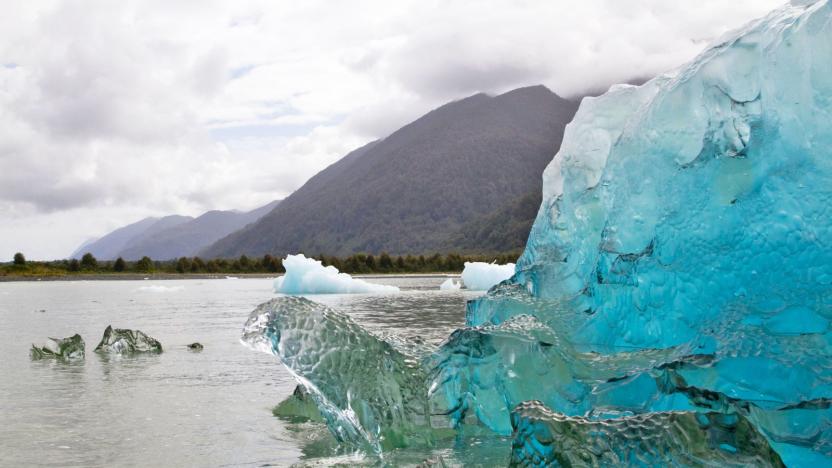
NASA can pinpoint glaciers that might flood coastal cities
It's safe to say that melting glaciers and ice sheets are bad things: they raise ocean levels and risk flooding low-lying coastal areas. But which of these icy bodies do you have to worry about in your area? NASA might help. It recently developed a technique that can determine which glaciers and sheets pose a threat to a given area. It's complex, but it could make a big difference for coastal cities that may need to react to global warming.
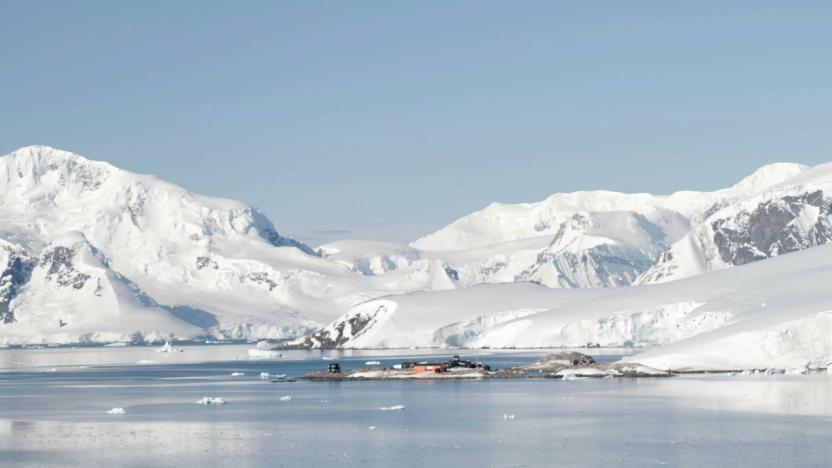
Study finds massive volcano range hidden in Antarctica's ice
A new study claims to have found a huge expanse of volcanoes lurking beneath the ice in Antarctica. Scientists unearthed a total of 91 previously undiscovered volcanoes -- some stretching up to 3,850 metres (12,600 feet) in height -- in the region known as the West Antarctic Rift System (WARS). The area is comparable to the densely concentrated volcanic regions in east Africa and North America, according to researchers from the University of Edinburgh.
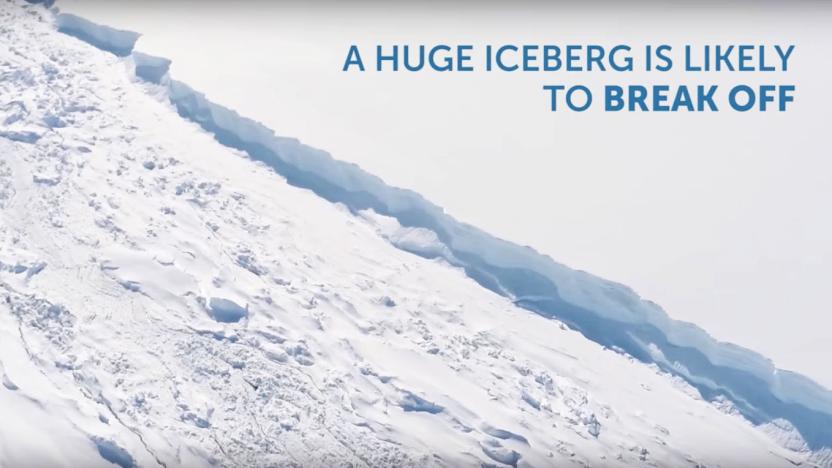
British scientists film massive rift in Antarctic ice shelf
The 1,500-foot-wide crack across Antarctic's Larsen C ice shelf has grown by roughly 20 more miles since December. It's now around 110 miles long, and based on satellite observations this month, an ice berg as big as Rhode Island could break away from Larsen C within weeks or months. A team of scientists from the British Antarctic Survey who've been monitoring ice shelves have captured the growing chasm on film to show us what it actually looks, as you can see in the video after the break.

Pogoplug adds Amazon Glacier-based cloud storage, includes gratis devices with $29 and $99 Family plans
Amazon's Santa Monica press conference is still a few hours out, but some news has already begun to flow, starting with a fairly minor tidbit from Pogoplug. Beginning today, the company will be offering a new cloud storage solution, powered by Amazon's Glacier service. Two Family plans are available, including 100GB of storage for $29 or a full terabyte for $99, each billed annually. For a limited time, you'll also get a free Pogoplug device with either Family plan. Enterprise customers can opt for a Team plan -- prices start at $199 per year for five users and five terabytes of storage -- but it's unclear whether or not you'll score a $50 appliance there. Head over to the source link below to sign up. Update: We previously stated that the $29 plan included 100MB of storage, however the correct amount is 100GB. This misprint has been corrected.

Amazon launches Glacier archiving service, a cheap way to put your files on ice
Amazon's S3 cloud service has proved a popular proposition, with many large web enterprises happily depending on it (most of the time) to serve up its content. Now, the internet retail giant is offering a similar product, aimed squarely at archives, called Glacier. The idea seems pretty simple, starting from a penny, you can store 1GB of data on the firm's servers for one month. You'll only pay for what you store, and there are no upfront costs. Thinking this sounds like a cheap way to host your website? Well, maybe not, as retrieval requests are sent to a queue, and won't be available to download for a few hours. There's no limit on the amount of data you can store though, which is not surprising, but each individual archive does have a 40TB limit -- so those DNA back-ups are off the menu. Retrieval is priced differently, with 5 percent of your storage (pro rata) downloadable for free, but beyond that you'll have to pay. The service is available from today, with storage locations in the US, Europe and Japan. Full details of pricing can be found via the source.

NASA simulates fly through of ginormous crack in Antarctic glacier, takes you for virtual ride
Swooping through the trenches of the Death Star likely ranks high on every geek's bucket list, but even an earthbound version won't really do the trick. Fortunately, the folks at NASA have rigged up a passable alternative -- flying through a massive 19-mile crack across Antarctica's Pine Island Glacier. The crack was discovered last October and measures 60 yards wide and 50 yards deep, certainly more than enough clearance to accommodate adventurous fliers. Using data gathered by NASA's Operation IceBridge science flight team, the agency generated an animated fly through that, well, mostly flew over the crack -- but we're sure that was a defensive maneuver. After all, you just never know when a TIE fighter flown by someone's father might sneak up from behind. See the icy flyover yourself after the break.

Microsoft Kinect used to map asteroids, glaciers, other scary things
Ken Mankoff is a PhD student at the University of California, Santa Cruz, where he studies ice and ocean interactions. He also counts himself among a growing legion of environmental scientists who have begun using Microsoft's Kinect to create detailed, 3D maps of caves, glaciers and even asteroids. As Wired reports, the Kinect has garnered something of a cult following within the scientific community, especially among those who, until now, have relied upon comparatively more expensive and complicated technologies to gather detailed 3D data. The approach du jour for most researchers is something known as Light Detection and Ranging (LIDAR) -- a laser-based technology capable of creating precise maps over relatively large areas. The Kinect, by contrast, can only see up to 16 feet in front of itself, but at just $120, it's significantly cheaper than the average LIDAR system, which can run for anywhere between $10,000 and $200,000. It's also surprisingly accurate, capable of capturing up to 9 million data points per second. Mankoff, for one, has already used the device to map a small cavern underneath a glacier in Norway, while Marco Tedesco, a hydrologist at the City College of New York, is looking to attach a Kinect to a remote-controlled helicopter, in the hopes of measuring so-called meltwater lakes found on glaciers during the summer. Then there's Naor Movshovitz, also a PhD student at UC Santa Cruz, who's more interested in using the Kinect and its image processing software to figure out how asteroids behave when broken up by a projectile. There are limitations, of course, since the device still has trouble performing amidst severe environmental conditions, though its supporters seem confident they'll find a solution. Read more at the source link below.

Behind the Mask: Comparing the archetype bruisers
A lot of people seem to get the wrong idea about Champions Online's Gold archetypes. For the most part, the Gold archetypes are simply different options to play with. As I mentioned previously, the Master is kind of an exception, since it's the only dedicated archetype tank. However, this does not mean that the Master is the beat-all-end-all or that Gold archetypes are outright superior to Silver ones. For the most part, the Silver archetypes are better at their focused roles than the comparable Gold archetypes. This week, we're going to look at the damage-soaking tanky archetypes and compare them. I'll also give a quick comparison between these bruisers and a comparable freeform hero. There's quite a few to cover, so let's get to it!

Mobilicity prepares HTC Emerald (aka MyTouch 4G) for northern ascent
Following its launch of the Nexus S, Mobilicity is bringing another Android superstar to Canada with the HTC Emerald, known stateside as the T-Mobile MyTouch 4G. According to Mobilesyrup, we're looking at a sticker price of $450 to $500 for this freshly re-minted device, so if you're hoping to benefit from the carrier's lower-cost monthly plans, we recommend you begin stacking up the loonies. Perceptive readers will note the phone is getting a Gingerbread upgrade just in time for its rumored mid-May arrival -- but otherwise the Emerald is a MyTouch 4G through and through, featuring the same 1GHz Snapdragon processor, 768MB of RAM and five megapixel shooter that we've come to know and love on T-Mobile's network. Let's keep our fingers crossed and hope we also get a dash of subtlety in this revision, given the overly-excited styling we noted in our review. [Thanks, Steve]

New AWS-equipped HTC in FCC -- is it the T-Mobile G2, the Glacier, or something else?
So we've collected enough circumstantial evidence recently to safely say that T-Mobile's getting at least two potentially ultra-awesome Android phones in the next few months: the G2 (aka Vision, aka Desire Z), and the multi-core Glacier. We don't know which, but we're thinking that one of those bad boys has just garnered FCC approval thanks to a filing today for a model code PC10100 that features support for AWS 3G -- the frequency pair T-Mobile USA uses -- along with 802.11n WiFi. Notably, the filing also points out that HSPA+ is in the cards, which is a feature T-Mobile has been quick to trumpet in its G2 advertising thus far. Given that the G2 seems closer to retail than the Glacier, we'll go ahead and surmise this is almost certainly the G2 here -- but then again, crazier things have happened.

HTC Glacier leaks out in GLBenchmark database, boasts really high scores
Remember the HTC Glacier spotted in a database a few months ago? Neither did we, but it's back and eating most every other smartphone's pixel-pushing lunch. Here it is at number four on the GLBenchmark Pro 1.1 charts, where only one variant of Samsung's Galaxy S and a pair of Tegra 2 tablets managed to keep it from claiming the top spot. AlienBabelTech, who found the entry, believes this is evidence the device has one of the new Snapdragon dual-cores, and though we won't speculate that far, a series of coincidences point to a T-Mobile launch (and a bout of logic has us worrying about battery life) if or when it hits our shores.

HTC Glacier, LED, and Vision among next round of vague codenames?
Start that wild imagination of yours running, because you're going to need it to make sense of this little tidbit. A tipster who claims (and gives us visual evidence as proof) that he was able to root out HTC product names like Incredible and Legend months before release on some sort of internal component bidding site has sent us a new shot showing three names we haven't heard before: "Glacier," "LED," and "Vision." Vision is listed with "TMO" next to it, suggesting it's coming to T-Mobile -- though we've no idea whether that's referring T-Mobile's European or American branch, which typically operate with virtually zero overlap. Glacier sounds like a phone that's either really slow, really cold, or is rapidly disappearing due to environmental forces beyond HTC's control, and LED sounds like... well, Light Emitting Diode. Yep, your guess is as good as ours. [Thanks, foil]

Britain's Isis ROV set to trawl the depths of Antarctica
We've seen mechanical devices creep through the inside of intestines, huge mounds of dirt, and even through the San Francisco Bay, but now a British deep-diving remotely operated vehicle (ROV) is getting set to probe the depths of Antarctica. In hopes of uncovering more about the effects of glaciers on the ocean floor, as well as details about the living creatures that inhabit said areas, UK scientists are carting the machine aboard the RSS James Clark Ross as they head for the Marguerite Bay area on the west side of the Antarctic Peninsula. The robot, dubbed Isis, will spend time on its inaugural January mission combing the seabed and channeling live video and pictures back to its captains via the built-in cameras, lights, sonars for acoustic navigation / imaging, and two remotely-controlled manipulator arms. Once the bot gets dried off (and thawed out) from its arctic expedition, the next tour of duty is already lined up, as Isis will head off to the Portuguese coast to do a bit more sightseeing. Of course, if you're interested in taking the £4.5 million ($8.81 million) creature out for a mission you deem worthwhile, it should be available for deep-pocketed renters soon after.











